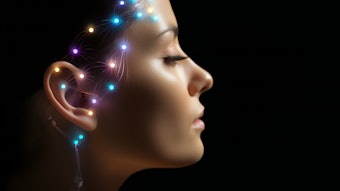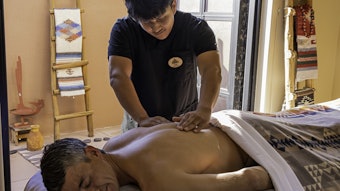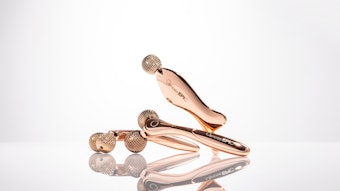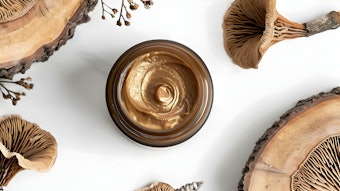
The healing effects of music have been noted for millenniums. In ancient Greece, Apollo was both the god of music and medicine. Pythagoras, one of the sages in ancient Greece, demonstrated that music actually could change behavior patterns and accelerate the healing process. Plato said, “Music is a moral law. It gives a soul to the universe, wings to the mind, flight to the imagination, a charm to sadness, a gaiety and life to everything.” It is said that Alexander the Great was restored to sanity by the music of a lyre—a stringed instrument. In the Himalayas and Sri Lanka, daily sacred healing chants have been performed by Buddhist monks for more than 2,000 years.
Music therapy has been used in hospitals, mental health centers, nursing homes and resorts for centuries. The right music can play an important role in calming the mind, allowing the full benefit of a treatment to restore peace and harmony within the body. Sound healing, like other mind-body treatments offered in spas, helps to break the stress cycle. Music energizes and relaxes one’s body, awakens our feelings, motivates our actions, soothes us to sleep, helps us not to think, wakes us up and ignites the soul.
Interpreting music
When the sound of music enters the brain, the electrical energy released by the neurons creates various frequencies of brain waves. The different frequencies are called beta, alpha, theta and delta waves. Beta waves are most prevalent during focused and active thinking, alpha waves during relaxation and quiet creativity, theta waves during meditation and before sleep, and delta waves during sleep.
Once music has been processed by the brain, it is transformed into an electrical pulse that travels down the spinal cord. This causes an impact on the autonomic nervous system, which, in turn, affects the heart rate, blood pressure, pulse and muscle tension. An example of this is soothing Indian raga—a type of classical music that can lower blood pressure. Hard rock music does just the opposite.
Music for entrainment. Entrainment refers to being in sync. In other words, the body and mind automatically adjust to the pace, rhythm and pulse of the melody. Music has the ability to unite the body, mind and spirit. Music entrainment brings about harmony within the body, which accelerates the healing process. It also is one of the few experiences that can touch a person on all levels of consciousness.
Music for entertainment. When a person is in a listless or sad mood, music has the power to lift the spirits, changing the mind-set from negative to positive. When the sound of music enters the brain, it has the ability to reduce anxiety and pain, and becomes therapeutic and entertaining. It temporarily transports the listener to another reality during the healing process.
Music as medicine. Through music, the body and mind can feel healing vibrations. Research has shown that melodies in the higher register increase tension, whereas those in the lower register reduce it. When music is used medicinally, it helps to lessen pain and turns sadness, anger and grief into a more positive state. When feelings are painful, people tend to live in denial. Music helps them to confront these inner feelings and transform them into a healing process.
Music and acutonics. Acutonics refers to the sound of healing and involves every cell in the body acting as a sound resonator. Acutonics balances, builds, expands and releases energy in the body. It increasingly is finding a home in spas throughout the country. Each organ and system has an individual cycle, pulse and rhythmic pattern that exists in resonant harmony. Examples of acutonics include tuning forks and Tibetan bowls.
Music placement
Different areas of the spa require music enhancements to set an overall tone and design. These areas include the reception space, treatment rooms and outdoors.
Music in the reception area. Remember, the first thing clients hear when they arrive is music. It should welcome them into the reception area and fill the treatment rooms. It will set the mood of the environment and affect those within it. First impressions are important, so select the right kind of music to establish the proper tone that fits with your spa brand. If the reception area is discordant with the sound of moving furniture, shouting and loud chatter, the client’s spa experience will be affected negatively.
Music in the massage room. Invisible speaker systems can be incorporated in individual massage rooms. While clients receive a treatment, they should relax to soothing music, such as the sound of Tibetan chants or soft jazz. This enhances the spa experience and helps to create return clients.
Music in the water. A number of companies offer integrated music systems designed specially for the spa environment, including hydrotherapy rooms. In lieu of external speakers, transducers and amplifiers are hidden behind a cabinet, maintaining the existing seating space and comfort, as well as the facility’s aesthetic appeal.
Music in the outdoors. Incorporate the sound of music outdoors to complement activities such as walking or meditation. Especially effective are the sounds of nature, such as gentle ocean waves, waterfalls, chirping birds and auditory effects from the Amazon rain forest.
Choosing a system
Carefully select a music system that best integrates with your spa. Take a look at your facility’s brand, décor and client needs when seeking out music system solutions.
MP3 players. Music devices, such as MP3 players, are great tools to utilize in any spa. With the ability to store thousands of songs in a small, easy-to-handle unit, music can be downloaded into different categories, such as jazz, hymns, choral or raga. Speakers and headphones will allow listening throughout all areas of the spa. Most fully charged devices can play 10–20 hours of nonstop tunes.
Underwater sound systems. Underwater speakers can be used as aquatic therapy in your spa. Introducing underwater sound systems can distinguish your facility from others and attract more clients. Playing sounds of the ocean, birds chirping or classical music, such as Mozart, can create a lasting impression. Use underwater sound systems in rooms with hydrotherapy tubs and showers, or in the swimming pool area.
Travel speakers. Portable speakers are ideal for mobile spas because they are small and easy to carry. Simply hide them behind a rock, under a massage table or in a tree during a treatment to add peaceful sounds to any environment.
Sound docks. Purchase a sound dock for the reception area or treatment room for a completely functional stereo system. Other environmental speakers are available that can withstand many weather conditions and blend into the natural surroundings.
Selling a lifestyle
Music is energy, and creating the proper energy is fundamental to a successful spa. The most important thing to realize is that the spa is selling a lifestyle. In order to truly appeal to clients in this context and create incremental profits, you should select music that integrates naturally with the environment.
These days, there are several companies that offer a wonderful variety of spa-oriented music. These collections of beautiful melodies range from quiet and tranquil—perhaps best suited for the morning or a relaxation treatment—to uplifting and ethereal—more appropriate for the afternoon or a rejuvenating treatment.
Music assists spa owners in selling far more than products from the shelves—it supports the sale of an overall image. It can help to draw more clients to your spa, and in the retail area the right music can get clients into a shopping mood. The right kind of music can be used as a marketing device to attract spa clients. The types delivered will depend on the setting, the time of day, the season and the demographics of your clients. Remember that people visit spas to relax. Music can help them to accomplish this goal.










